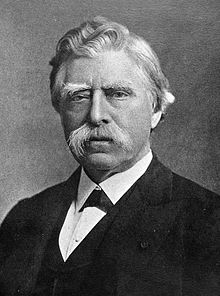Physics of wireless signalling
Several different electrical, magnetic, or electromagnetic physical phenomena can be used to transmit signals over a distance without intervening wires. The various methods for wireless signal transmissions include:- Electrical conduction through the ground, or through water.
- Magnetic induction
- Capacitive coupling
- Electromagnetic waves
Capacitive and inductive coupling systems today are used only for short-range special purpose systems. The physical phenomenon used generally today for long-distance wireless communications involves the use of modulation of electromagnetic waves, which is radio.
Radio antennas radiate electromagnetic waves that can reach the receiver either by ground wave propagation, by refraction from the ionosphere, known as sky wave propagation, and occasionally by refraction in lower layers of the atmosphere (tropospheric ducting). The ground wave component is the portion of the radiated electromagnetic wave that propagates close to the Earth's surface. It has both direct-wave and ground-reflected components. The direct-wave is limited only by the distance from the transmitter to the horizon plus a distance added by diffraction around the curvature of the earth. The ground-reflected portion of the radiated wave reaches the receiving antenna after being reflected from the Earth's surface. A portion of the ground wave energy radiated by the antenna may also be guided by the Earth's surface as a ground-hugging surface wave.
Innovations and laboratory experiments
[edit] Hughes
In 1879, during experiments with his induction balance, David E. Hughes transmitted signals which he attributed to electromagnetic waves. Hughes' contemporaries claimed that the detected effects were due to electromagnetic induction although there have been later claims that he did, in fact, transmit and receive electromagnetic waves [4][5]. Hughes used his apparatus to transmit over a few hundred yards, using a transmitter controlled by clockwork and a receiver using his carbon detector.Hertz
Heinrich Rudolf Hertz was the experimental physicist who confirmed Maxwell's work in the laboratory.[6] From 1886 to 1888 inclusive, in his UHF experiments, he transmitted and received radio waves over short distances and showed that the properties of radio waves were consistent with Maxwell’s electromagnetic theory. He demonstrated that radio radiation had all the properties of waves (now called electromagnetic radiation), and discovered that the electromagnetic equations could be reformulated into a partial differential equation called the wave equation.Hertz used the damped oscillating currents in a dipole antenna, triggered by a high-voltage electrical capacitive spark discharge, as his source of radio waves. His detector in some experiments was another dipole antenna connected to a narrow spark gap. A small spark in this gap signified detection of the radio waves. When he added cylindrical reflectors behind his dipole antennas, Hertz could detect radio waves about 20 metres from the transmitter in his laboratory. He did not try to transmit further because he wanted to prove electromagnetic theory, not to develop wireless communications.
Hertz’s setup for a source and detector of radio waves (then called Hertzian waves[7] in his honor) was the first intentional and unequivocal transmission and reception of radio waves through free space.[8]
Hertz, though, did not devise a system for actual general use nor describe the application of the technology and seemed uninterested in the practical importance of his experiments. He stated that "It's of no use whatsoever ... this is just an experiment that proves Maestro Maxwell was right — we just have these mysterious electromagnetic waves that we cannot see with the naked eye. But they are there."[9]
Asked about the ramifications of his discoveries, Hertz replied, "Nothing, I guess." Hertz also stated, "I do not think that the wireless waves I have discovered will have any practical application."[9] Hertz died in 1894, so the art of radio was left to others to implement into a practical form.


No comments:
Post a Comment